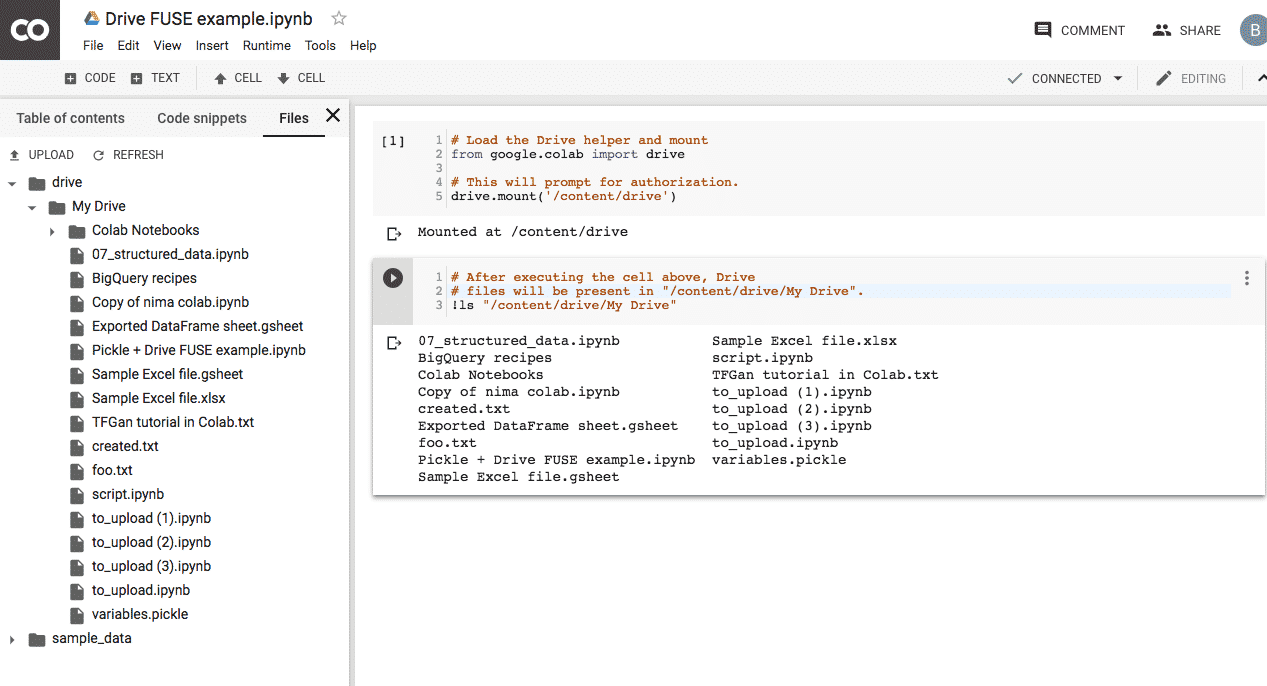

Select a hardware accelerator.Ĭolab might give you a Tesla K80 or a P100 or a V100 based on availability.Ĭolab comes pre-loaded with all your favorite Data Science and Data Engineering libraries. To add GPU or TPU to your runtime, Go to Runtime > Change runtime type. You can leverage GPU and TPU for training your ML model, absolutely for FREE!!. This creates a blank Google Colab Notebook, try it out!Ĭolab notebook provides 2 cores and around 13GB of RAM To create a new Google Colab notebook, just go to your Google Drive, click New > Google Colaboratory Colab.Ĭolab resides within your Google Drive. Let’s talk about “Notebooks on the Web” or Google Colaboratory, a.k.a. Even though the way to use R in Google Colab is a bit confusing, and doesn’t yet have the same services as the Python runtime, in the end, it still works quite well.Setting up Jupyter Notebook environments can be hard, but it does not have to. All of them are good platforms, especially when used for learning purposes can shorten the time for initial setup (downloading and installing R, and installing packages). As I mentioned earlier, Google Colab provide us an alternative for learning or working with R, besides Kaggle and RStudio Cloud. This is what I think I can contribute to the data community.
#COLAB NOTEBOOKS DOWNLOAD#
Now that we have the workaround, authorizing BigQuery and retrieve data from there would be simple: install.packages("bigrquery") library("bigrquery") bq_auth(use_oob = TRUE, cache = FALSE)Įxtract data from BigQuery with custom query: # Store the project id projectid = "your-project-id" # Set the query sql <- "SELECT * FROM your_table" # Run the query project_query <- bq_project_query(projectid, sql, use_legacy_sql = FALSE) # Download result to dataframe df <- bq_table_download(project_query) Conclusion
#COLAB NOTEBOOKS HOW TO#
Image by Author, Grant permission How to use BigQuery in Colab R runtimeįor business people, or for researchers who are more comfortable using R, perhaps we need to retrieve data from company-owned BigQuery or publicly available datasets there. These lines will return a variable x, and display it on the cell output: Note that this must be placed at the beginning of the cell. Use this if you want all syntax in a cell to be executed in R. Start rmagic by executing this in a cell: %load_ext rpy2.ipython After that, every time you want to use R, add %%R in the beginning of each cell.Run rmagic by executing this command %load_ext rpy2.ipython.How to use R and Python together in Colab


The second way is to actually start the notebook in the R runtime.This method allows you to execute R and Python syntax together. The first way is to use the rpy2 package in the Python runtime.This post will tell you how to run R in Google Colab and how to mount Google Drive or access BigQuery in R notebook. We only need a browser and a fairly stable internet connection.Ĭolab is a great alternative tool to facilitate our work, whether as a student, professional, or researcher.Īlthough Colab is primarily used for coding in Python, apparently we can also use it for R ( #Rstats). The processing is done on Google-owned servers in the cloud. We can perform data analysis, create models, evaluate these models in Colab. Colab, or Colaboratory is an interactive notebook provided by Google (primarily) for writing and running Python through a browser.


 0 kommentar(er)
0 kommentar(er)
